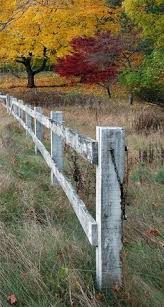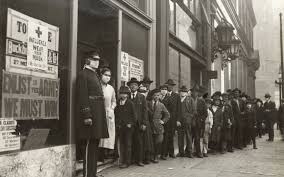
Perched on the fence with a strong wind blowing.
That’s what Day 56 feels like, the second day of November 1918.
The fence is the issue of re-opening or not, the perch is the indecision over which to do, to stay closed or to end closures, and the wind is the trend of most American communities to stop quarantines, stop the bans on all sorts of public gatherings, stop the stop of normal daily life.
They make the call in Dallas, Texas and Buffalo, New York. It’s time to get back to life as living and no more of not-dying.
In California the Fresno Morning Republican newspaper declares that the entire state has done amazingly well in handling influenza. The toll of the illness, the editors assert, is that unlike the eastern part of the United States, Californians “have taken more vigorous measures than others.” The same edition of the newspaper includes a story that seemingly proves the point: police arrest eight people today for not wearing flu masks.
One of the headlines in the Fresno Morning Republican has a curious nature. “Chinese Refuse To Wear Masks” is the bold announcement. The racial or ethnic background of the other violators go unmentioned.
The people of Fairmount, Minnesota still worry about influenza. After the second death of a local resident today, discussions have begun again about whether to re-close the local schools. They’ve been open for several days following an earlier shut-down. This latest death puts everyone on edge, raising doubts and spurring searches for any more information that can help them decide what to do—re-close or remain open. Or consider their dilemma this way: we were open, then we closed, then we re-opened, and now we…re-close?…only to at a later point have to decide again to…re-re-open? An exhausting cycle.
Dr. John Sansbury is the county health officer in Prince Georges County, Maryland. Sansbury is a fixture in the county, having served in this capacity for the past fourteen years. He’s the one—the person residents expect to give final advice and make the final decision on lifting local bans in place for the past three weeks. Sifting through the reports of new deaths and new cases, Sansbury is optimistic. He wants to wait just a little bit longer. The 49-year old doctor carries a heavy burden. A wrong decision and his reputation could be destroyed.
The Journal of the American Medical Association, printed in Boston, Massachusetts, is one of the sources of the latest information for medical professionals like Sansbury. Today, the group’s latest publication is available for study. Dr. Douglas Symmers has written an article on the “pathologic similarity between pneumonia of bubonic plague and of pandemic influenza.” Symmers concludes the article by promising additional research into a tendency for pregnant women with influenza to abort their babies.
The same issue has a letter to the editor from Dr. H.A. Klein of Chicago, Illinois. He describes a successful treatment for patients with influenza, having used it in both his private practice and at Alexian Brothers’ Hospital in Chicago. The key, Klein states, is to administer large amounts of quinin and to keep the bowels open.
The Scientific American has an article by Wade Oliver, a professor at Long Island College Hospital. Intriguingly entitled “How Does It Happen That The Present Epidemic Is So Fatal?”, Oliver ultimately concludes that it’s likely the killer germs developed an irresistible power in contacting thousands of weakened human bodies in the European war.
And anyone on top the fence feels a strong wind blow.
A thought for you on Day 56, May 7, 2020, fifty-six days after President Trump declares Covid-19 a national emergency—Chinese. A tragedy like the pandemic of 1918 overwhelms everything in its path. It acts the same as a tsunami. We’ve seen it distinguish and discriminate not at all. Every place and person is a target. Strangely, though, the totality of influenza has limits. It does not eliminate or eradicate deep-seated problems and tensions. The article in the Fresno newspaper testifies to the truth of this. Simmering as well as boiling resentments over Chinese immigration—largely a West Coast phenomenon—do not disappear. They are still there. If anything, it’s possible they’ll be further revealed in a harsher form under the pressure of influenza. But what if we could reverse the dynamic and use the experience of Covid-19 to remove or at least chip away at existing problems and tensions? What would it take for you to pick up the hammer and knock off a piece of the negative? I know it’s hard to envision when we’re so focused on our family, the people in our space and circle. Can you make a point of keeping an eye open for a chance to do so? Include in your outreach to serve others a different sort of outreach—the stretch to address a longstanding difficulty in a new light and with a new idea.

(note to reader—I invite you to subscribe to this series/blog. The purpose of my posting in this series is the purpose of my enterprise at Historical Solutions—to explore the past in a new way that brings new and different value to you, both in the present (this minute) and on the edge of the future (what’s ahead or forward of this minute). The past is everything before now, the totality of all time before the present; history is a set of very small slices of the past that, for a particular reason, have been remembered. If you wish to contact me privately, please do not hesitate to text or call 317-407-3687)







